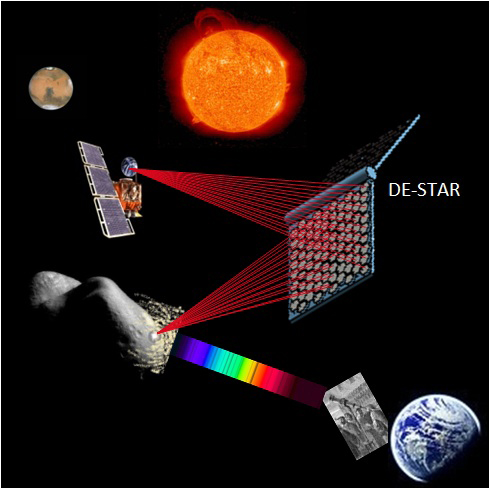
Near-Misses and their Uses
by PAUL GILSTER on FEBRUARY 18, 2013
We can hope that the celestial events of February 15, including the spectacular fireball over Chelyabinsk and the near-miss from asteroid 2012 DA14, have raised public consciousness about Earth’s neighbors in space. And indeed, this seems to be the case. Media outlets were flooded with articles, photos and video, and talk show hosts found themselves asking what could be done to prevent future impacts. Could all of this prompt a new surge of interest in space?
The scenario is exactly what Arthur C. Clarke wrote about in Rendezvous with Rama (1972), where what it takes for humanity to get serious about developing a protective system (and, by extension, about pushing its space program forward) is an impact. We can be grateful that the one we’ve just seen was far smaller than Clarke’s, as described in the first chapter of the novel:
At 0946 GMT on the morning of September 11 in the exceptionally beautiful summer of the year 2077, most of the inhabitants of Europe saw a dazzling fireball appear in the eastern sky. Within seconds it was brighter than the Sun, and as it moved across the heavens — at first in utter silence — it left behind it a churning column of dust and smoke.
Somewhere above Austria it began to disintegrate, producing a series of concussions so violent that more than a million people had their hearing permanently damaged. They were the lucky ones.
Clarke goes on to recount the impact in northern Italy, where Padua, Verona and Venice are destroyed by the combination of impact and tsunami. The deaths of 600,000 people and the great chunk torn out of human history create a resolution that this must not happen again, and out of this is born the system of radars that eventually finds the alien intruder dubbed Rama. Clarke’s book is about the encounter with this enigmatic vessel, but the asteroid-warning radars he imagines create the kind of warning grid we may eventually put in place.
The B612 Foundation has been making the case for asteroid detection and mitigation studies for some years now. Its Sentinel Space Telescope is scheduled for launch in 2018, with the aim of detecting over 90 percent of asteroids over 100 meters in diameter — these are the ones large enough to destroy an entire region of the planet if they were to hit us. Sentinel also aims to track more than 50 percent of near-Earth asteroids in the DA-14 category. With decades of warning, says CEO Ed Lu in this B612 news release, we can use existing technology to destroy or alter the trajectory of any such objects.
Read more: Near-Misses and their Uses — Centauri Dreams.























